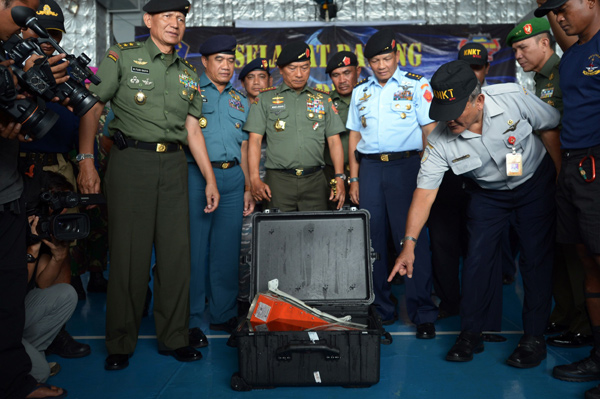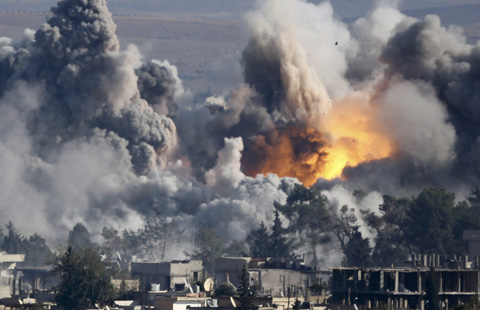Divers retrieve AirAsia 'black box', explosion theory questioned
(Xinhua) Updated: 2015-01-12 20:25
PANGKALAN BUN, Indonesia/JAKARTA - Indonesian navy divers retrieved the black box flight data recorder from the wreck of an AirAsia passenger jet on Monday, a major step towards unravelling the cause of the crash that killed all 162 people on board.
But there was confusion about what happened in the final moments of Flight QZ8501, which crashed off the Indonesian coast on Dec 28, with one official saying the plane probably exploded before hitting the water and another disputing that theory.
The Airbus A320-200 airliner lost contact with air traffic control in bad weather less than halfway into a two-hour flight from Indonesia's second-biggest city of Surabaya to Singapore.
"At 7:11, we succeeded in lifting the part of the black box known as the flight data recorder," Fransiskus Bambang Soelistyo, head of the National Search and Rescue Agency, told reporters at a news conference.
The second so-called black box, containing the cockpit voice recorder, is located about 20 metres away from where the flight data recorder was found, but divers have not yet been able to get to it.
"(The cockpit voice recorder) seems to be under a wing, which is quite heavy," said Supriyadi, operations coordinator for the search and rescue agency. "So we will use air bags to lift it. This will be done tomorrow."
The black boxes contain a wealth of data that will be crucial for investigators piecing together the sequence of events that led to the airliner plunging into the sea.
Supriyadi said the wreckage indicated that the plane likely "experienced an explosion" before hitting the water due to a significant change in air pressure.
He said the left side of the plane seemed to have disintegrated, pointing to a change in pressure that could have caused an explosion.
"NO DATA" TO SUPPORT THEORY
Supporting this possibility, he added, was the fact that fishermen in the area had reported hearing an explosion and saw smoke above the water.
But another official disputed the likelihood of a blast.
"There is no data to support that kind of theory," said Santoso Sayogo, an investigator at the National Transportation Safety Committee.
- Investigator disputes AirAsia explosion theory
- AirAsia cockpit voice recorder located: official
- Black box of crashed AirAsia plane retrieved
- Indonesian divers launch efforts to retrieve AirAsia black boxes
- Divers spot black boxes in AirAsia wreckage hunt
- Black box signals believed from crashed AirAsia plane detected again
- Indonesian search team raises tail of crashed AirAsia plane
- Pings detected in search for AirAsia jet's black box
- Rescuers to lift tail, retrieve more bodies in crashed AirAsia jet
- AirAsia jet tail found underwater, black box may be close by
 Overhauling China's organ transplant system could take some time
Overhauling China's organ transplant system could take some time
Overhauling China's organ transplant system could take some time






